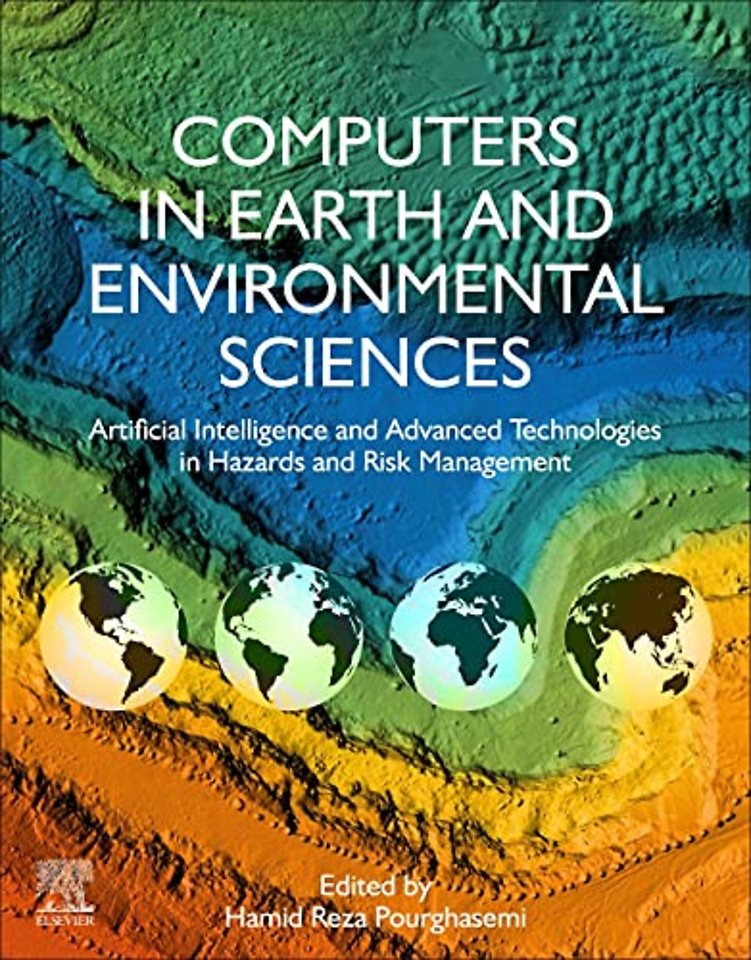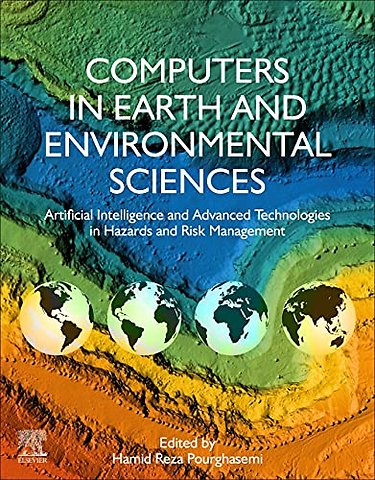<p>1. Predicting Dissolved Oxygen Concentration in River using New Advanced Machines Learning: Long-Short Term Memory (LSTM) Deep Learning.<br>2. Fractal analysis of valley sections in geological formations of arid areas<br>3. Data-driven approach for estimating contaminants in natural water<br>4. Application of analytical hierarchy process (AHP) in landslide susceptibility mapping for Qazvin province, N Iran<br>5. Assessment of machine learning algorithms in land use classification <br>6. Evaluation of land use change predictions using CA-Markov model and managerial scenarios<br>7. Topographical features and soil erosion processes<br>8. Mapping the NDVI and monitoring of its changes using Google Earth Engine and Sentinel-2 images <br>9. Spatiotemporal Urban Sprawl and Land Resource Assessment using Google Earth Engine Platform in Lahore District, Pakistan<br>10. Using OWA - AHP method to predict landslide-prone areas<br>11. Multi-scale drought hazard assessment in the Philippines<br>12. Selection of the best pixel-based algorithm for land cover mapping in Zagros forests of Iran using Sentinel-2A satellite image: A case study in Khuzestan province<br>13. Identify the important driving forces on gully erosion, Chaharmahal and Bakhtiari province, Iran<br>14. Analysis of social resilience of villagers in the face of drought using LPCIEA indicator, Case study: Downstream of Dorodzan dam, Iran<br>15. Spatial and seasonal modelling of land surface temperature using Random Forest<br>16. Municipal solid waste landfill suitability analysis through spatial multi-criteria decision analysis: a case study <br>17. Predictive habitat suitability models for Teucrium polium L. using boosted regression trees<br>18. Ecoengineering practices for Soil degradation protection for vulnerable hill slopes<br>19. Soft computing applications in rainfall induced landslide analysis and protection – Recent trends, techniques, and opportunities<br>20. Remote sensing and machine learning techniques to monitor fluvial corridor evolution: the Aras River between Iran and Azerbaijan <br>21. Studies on potential plant selection focusing on soil bioengineering application for land degradation protection<br>22. IoT applications in landslide prediction and abatement – Trends, opportunities and challenge<br>23. Application of WEPP model for runoff and sediment yield simulation from ungauged watershed in Shivalik foothills<br>24. Parameter estimation of a new four-parameter Muskingum flood routing model<br>25. Predicting areas affected by forest fire based on machine learning algorithm <br>26. Management of pest-infected oak trees using remote sensing-based classification algorithms and GIS data<br>27. The COVID-19 Crisis and Its Consequences for Global Warming and Climate Change<br>28. Earthquake anomalies for global events from GNSS TEC and other satellites<br>29. Landslide spatial modelling using a bivariate statistical method in Kermanshah Province, Iran<br>30. Normalized Difference Vegatation Index analysis of Forest Cover Change Detection in Paro Dzongkhag, Bhutan<br>31. Rate of penetration prediction in drilling wells from the Hassi Messaoud oil field (SE Algeria): use of artificial intelligence techniques and environmental implications<br>32. Soil erodibility and its influential factors in arid and semi-arid regions of the Middle-East<br>33. Non-carcinogenic health risk assessment of fluoride in groundwater of the alluvial plains of River Yamuna, Delhi, India<br>34. Digital soil mapping of organic carbon at two depths in loess hilly region of Northern Iran<br>35. Hydrochemistry and geogenic pollution assessment of groundwater in Akşehir (Konya/Turkey) using GIS<br>36. Comparison of the frequency ratio, index of entropy, and artificial neural networks models for landslide susceptibility mapping: A case study in Pınarbaşı/Kastamonu (North of Turkey)<br>37. Remote Sensing Technology for Post-Disaster Building Damage Assessment<br>38. Doing More with Less: Coupling Morphometric Indices for Automated Gully Pattern Extraction (A Case Study in the Southeast of Iran)<br>39. Identification of land subsidence prone areas and its mapping using machine learning algorithms<br>40. Monitoring of Spatiotemporal Changes of Soil Salinity and Alkalinity in Eastern and Central Parts of Iran<br>41. Fine-grain Sparse Woodlands Mapping, Using Kernel-based Granulometry of Textural Pattern Measures on Satellite Imageries<br>42. Badland erosion mapping and effective factors on its occurrence using random forest model<br>43. Application of machine learning algorithms in Hydrology<br>44. Digital soil mapping of bulk density in loess derived- soils with complex topography<br>45. Landslide Susceptibility Mapping along the Thimphu-Phuentsholing Highway using Machine Learning<br>46. Drought Assessment using the Standardized Precipitation Index (SPI) in Greece<br>47. COVID-19: An overview on official reports in Iran and world along with some comparisons to other hazards <br>48. Multi-hazard risk analysis and governance across a provincial capital in northern Iran</p>

